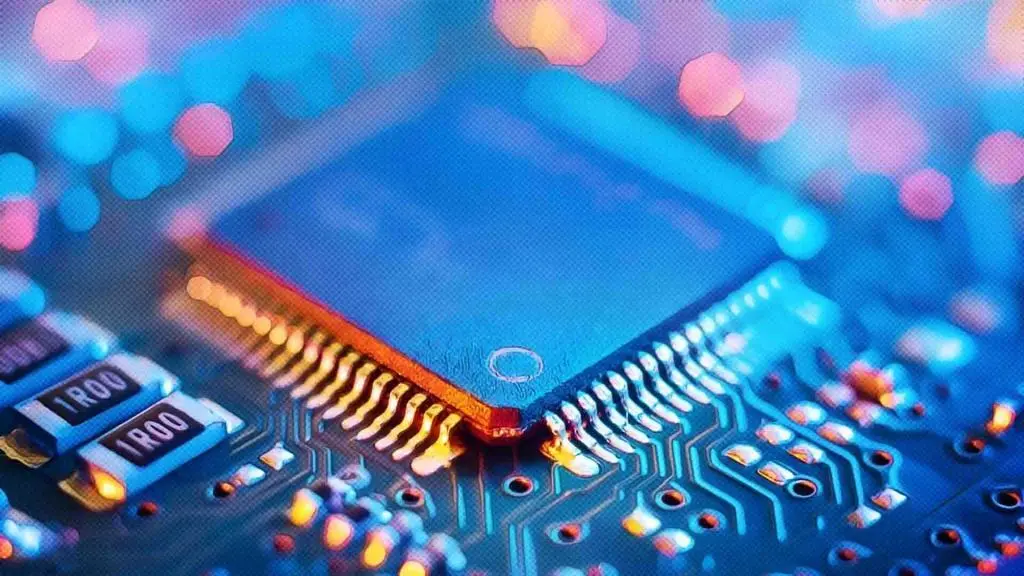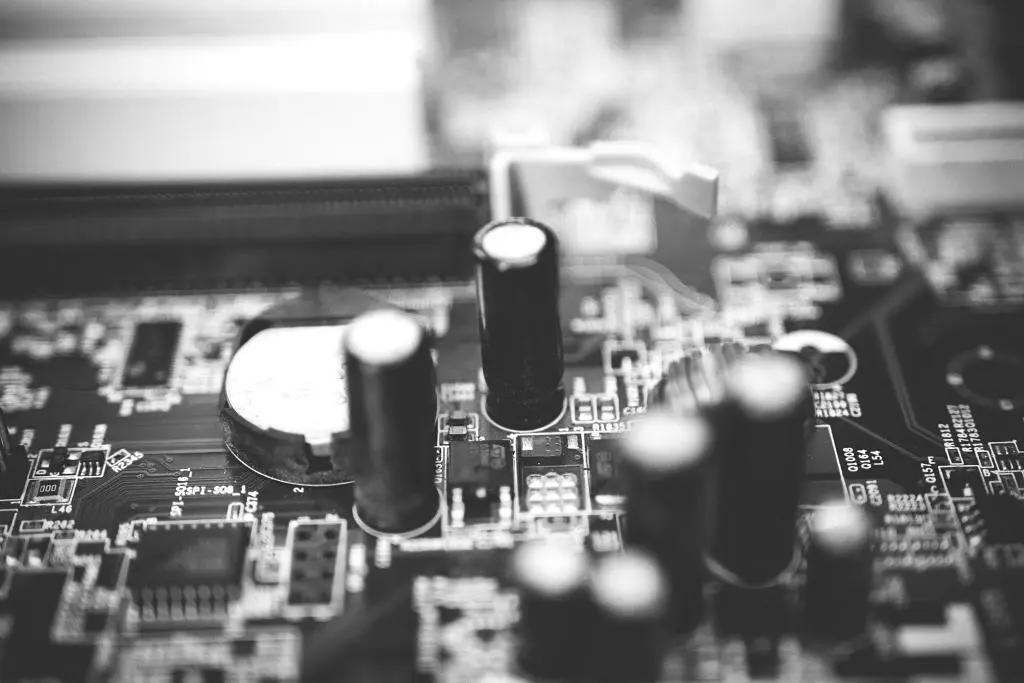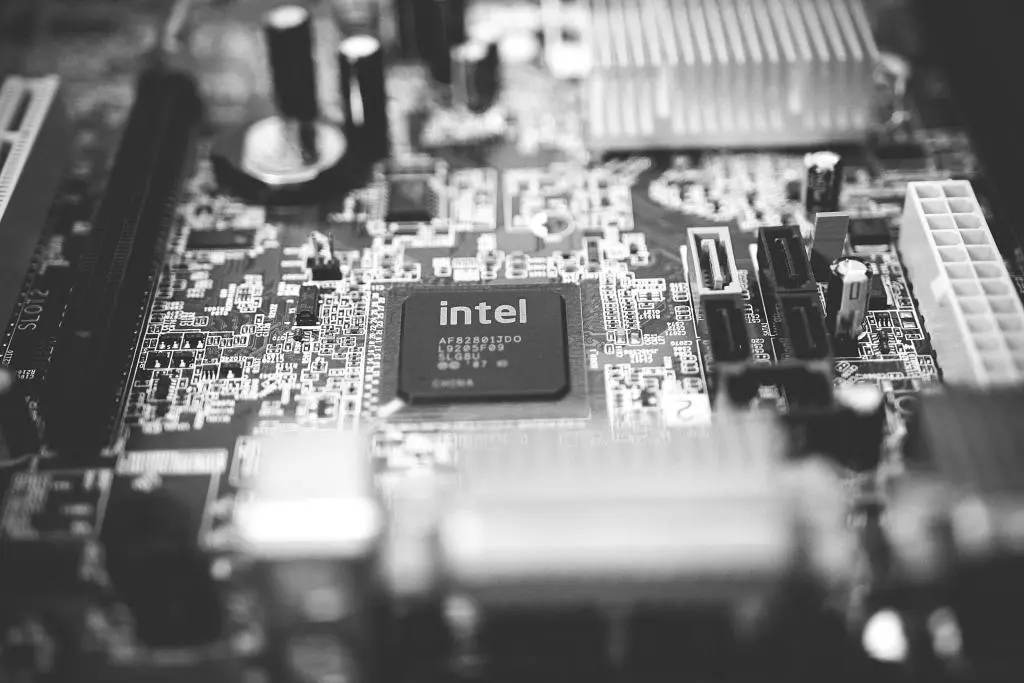IC, short for Integrated Circuit is actually a chip or most accurate a microchip because this electronic component contains thousands of miniaturized components in it, transistors, capacitors, resistors.
One microchip replace large circuit boards and in this way it is possible to design more efficient everything and compact and still containing the functionality of thousands of components.

What is IC (Integrated Circuit): Table of Contents
What are Integrated Circuits?
You know that tiny little chip inside your electronic gizmos? It’s called an Integrated Circuit, or IC for short. But, don’t let its small size fool ya. This miniature marvel packs a punch, containing a staggering amount of microscopic resistors, capacitors, diodes and transistors, all crammed onto a tiny semiconductor wafer.
Think of an IC as the building block of modern tech. It’s like a tiny city, where each little component plays a specific role. It can act as an amplifier, oscillator, timer, counter, logic gate, computer memory, microcontroller or even a microprocessor! Talk about multi-tasking!
So, what exactly is an IC? As the name suggests, it’s an integrated system of miniaturized components, all connected and working together on a thin substrate of semiconductor material (usually silicon crystal). It’s like a symphony of technology, all working together in harmony.
In a world where technology is constantly evolving, the humble IC remains at the forefront, powering our devices and making our lives easier. Who would have thought such a small thing could have such a big impact?”
A single Integrated Circuit (IC) can house thousands, if not millions, of transistors, resistors, capacitors, and diodes. That’s only the tip of the iceberg! It’s a technological wonderland inside, with a complex web of semiconductor wafers, silicon, copper, and other materials.
Each component is small, usually microscopic, but combined they form a monolithic chip that can fit in just a few square millimeters or centimeters. It’s like magic!
One prime example of an IC is the computer processor. It’s a digital powerhouse that can contain millions or billions of transistors, capacitors, logic gates, and more, all interconnected and working together like a well-oiled machine. But not all ICs are processors! There’s a whole world of Integrated Circuits out there, each with its own unique function, and each as amazing as the next.
What are Types of Integrated Circuits (IC)?
Integrated Circuits (ICs) are a crucial component in the world of electronics, and they come in various forms to fit different needs. These can be linear or analog, digital or a combination of both, depending on their intended purpose.

Analog or linear ICs are some of the simplest types around. They usually consist of a few components and are connected to devices that either collect signals from the environment or send signals back out into it. For instance, a microphone transforms vocal sounds into an electrical signal with varying voltage, which then gets transformed by an analog circuit, amplifying it and filtering out any unwanted noise.
The signal is then sent to a loudspeaker to produce the same sounds picked up by the microphone. Another common use of analog circuits is to control devices based on changes in the environment. Take a thermostat, for example, which gets signals from a temperature sensor and turns the air conditioner, heater, or oven on and off based on a predetermined value.
With its simplicity and versatility, the analog IC proves to be a vital player in the world of electronics.
Contrary to analog circuits, digital circuits are all about precision. They’re designed to only accept voltages of specific values and work in two states – “on” and “off” – which represent 1 and 0 in binary. This binary system uses the logic of Boolean algebra to perform arithmetic and is the foundation of digital circuit design.
When it comes to ICs for digital computers and related devices, these basic elements are combined to perform the desired functions. Binary numbers and Boolean algebra provide the building blocks for the digital world, where everything is either “on” or “off.” It’s a stark contrast to the fluid and constantly changing nature of analog circuits, but that’s what makes digital circuits so special. They bring a level of reliability and consistency to the table that analog circuits just can’t match.
The Advantages of Integrated Circuits
Integrated circuits have revolutionized the world of electronics with their incredible ability to boost efficiency. By cramming thousands of components into one tiny chip, they’ve slimmed down electronic devices and made them more lightweight, convenient and portable. And let’s not forget, they’ve also improved reliability by minimizing the number of components that could potentially cause issues.
But that’s not all – these tiny wonders of technology have paved the way for even more impressive advancements. With their capability for faster and more complex processing, they’ve made it possible for us to enjoy all the high-tech gadgetry we have today, from smartphones and laptops to a whole range of cutting-edge consumer electronics.
A Brief History of Integrated Circuits (IC)
ICs, or integrated circuits, trace their roots back to the groundbreaking invention of the transistor by William B. Shockley and his talented team at Bell Labs in 1947. They discovered that electrons formed a barrier on certain crystal surfaces and figured out how to control electricity flow through the crystal, which gave birth to the transistor.
This new device could perform various electrical operations like signal amplification that were previously done with vacuum tubes. With a name blending “transfer” and “resistor,” the transistor paved the way for the study of solid-state electronics.

Solid-state devices, made from the same materials and principles, proved to be superior in every way to vacuum tubes – more durable, easier to work with, more reliable, smaller, and less expensive. It didn’t take long for engineers to use these same principles to create other electrical components, such as resistors and capacitors. However, as the electrical devices got smaller, the main obstacle became the messy wiring between them.
That’s where the idea of integrated circuits came in. By combining multiple components onto a single chip, engineers could make circuits smaller, more efficient, and easier to work with.
Jack Kilby and Robert Noyce were a couple of brilliant minds who revolutionized the world of electronics back in 1958. These geniuses at Texas Instruments and Fairchild Semiconductor independently came up with a game-changing idea that would shrink circuit size like never before.
They laid thin pathways of metal – usually aluminum or copper – right on the same piece of material as their devices, acting as wires. This allowed for the entire circuit to be integrated onto a single solid material, giving birth to the integrated circuit (IC).
Today, ICs can pack hundreds of thousands of transistors onto a pea-sized piece of material – a feat that would’ve been near impossible with vacuum tubes.

